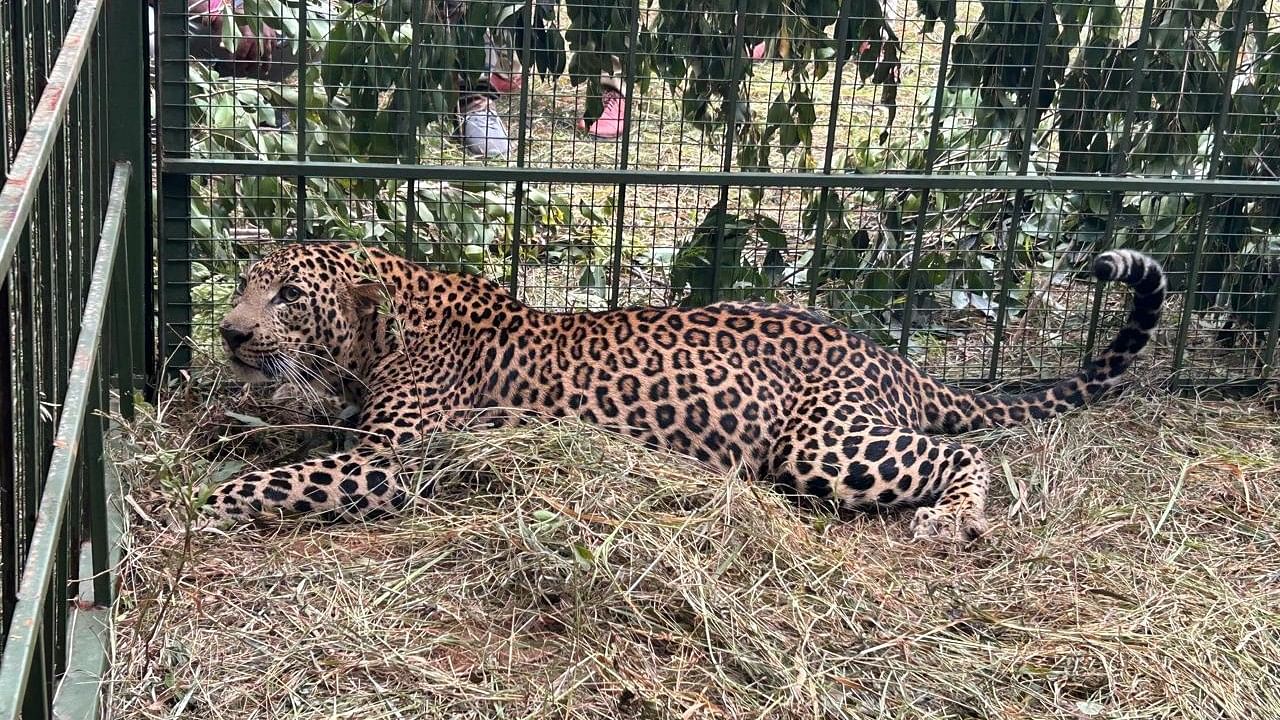
The leopard — estimated to be between five and six years old — was lured into a 'Tumkur cage', using a goat and two chickens as bait, according to forest officials.
Credit: Special arrangement
Bengaluru: A male leopard sighted in Bengaluru's busy tech hub last week has finally been captured, ending days of uncertainty and panic in Electronic City and nearby areas.
The leopard — estimated to be between five and six years old — was lured into a 'Tumkur cage' at 11.57 pm, using a goat and two chickens as bait, according to forest officials.
Two teams comprising 35 forest officials initially used three normal cages (5x3 feet), two thermal drones and 15 camera traps to track and capture the leopard, which was spotted on September 18 near the Electronic City toll plaza, 16 km from its suspected home in the Bannerghatta National Park (BNP). Although the leopard was spotted, it did not walk into any of the traps.
Forest officials then deployed the 'Tumkur cage' — named after the city where it was designed and developed — to lure the leopard. At 10x12 feet, the 'Tumkur cage' is used for capturing large wild animals.
Raghu M, Range Forest Officer, KR Puram, said the leopard walked into the 'Tumkur cage', which had been set up between bushes and camouflaged with creepers.
The leopard was in the best of health with no injuries, and its canines were intact, indicating it was capable of hunting.
After the capture, veterinarian Dr Kiran immobilised the leopard with a dart and transported it to the BNP for a medical examination. During the check-up, a small patch of skin from its tail was removed, and a rice grain-sized microchip was implanted using an electronic syringe.
The microchip has a 15-digit number containing information about the leopard's last capture. If the animal is captured again, the chip will provide data on its previous movements outside the forest.
A senior forest official revealed that the leopard had been sent to the Bandipur reserve forest, where it would be radio-collared and released back into the wild.
However, V Ganesh, Assistant Conservator of Forests, said permission had been sought from the Principal Chief Conservator of Forests (Wildlife) for radio-collaring the leopard. If the approval comes, the leopard will be fitted with a radio collar from Nagarahole and released into the wild on Wednesday night.
Ganesh told DH that radio-collaring would help study the leopard's predatory and mating preferences, adaptive skills, aggression levels and how these correlate with its age.
Raghu noted that the big cat had adapted well to the Electronic City area, and studying its behaviour will reveal its instincts, helping tackle future encounters.